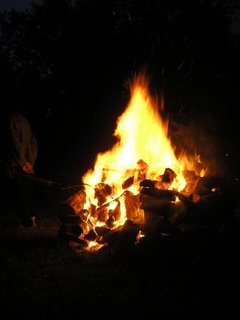After reading some of Tom Harpur's other books (The Pagan Christ, Prayer, Life After Death, Finding the Still Point - A Spiritual Response to Stress and The God Question), I plunged into the The Uncommon Touch with great anticipation. I have long been interested in the spiritual aspects of healing - be it powered by the individual's faith or by external intervention by a healer person or by some invisible force that the healing is attributed to. I must immediately admit, I am not the ideal unbiased observer in this area as I do firmly believe in the ability of people to have significant influence on their own and others' recovery from physical, mental, spiritual or emotional trauma.
The Uncommon Touch is an expertly organized, well-balanced examination of the phenomenon of spiritual healing. Tom Harpur, a prolific Canadian spiritual author, journalist and TV host, first attacks some familiar stereotypes: TV evangelists who exhibit faith healing are mostly charlatans. Harpur's premise is that spiritual healing is an enabling and powerful ally, rather than an opposition to conventional medicine; and spiritual healing includes all those patients as well who "simply" believe they will get the cure, and do, as opposed to those individuals who give up all hope and die. Harpur cites abundant testimony on historical figures such as Godfrey Mowatt (the famous "blind healer"). He then references the work of Wilhelm Reich, an Austrian psychiatrist and psychoanalyst, and student of Freud who postulated "orgone energy." Orgone energy is a massless universal life force that is, perhaps, tapped into through the laying on of hands. (The Star Wars series' references to the "Force" may also have its origin in the concept of Orgone energy.) Harpur gives also an account of the Canadian biologist Bernard Grad's attempt to measure orgone energy in the laying on of hands of a contemporary healer, Oskar Estebany, with double-blind experiments involving mice. Wounded mice that Estebany had handled recovered more rapidly than the control group. There's also discussion in the book on what one might call the "positive thinking" aspect of prayer. Welcome evidence for those inclined to embrace it.
Seven Principles of Cosmic Spirituality (from Tom Harpur's own web site):
The Uncommon Touch is an expertly organized, well-balanced examination of the phenomenon of spiritual healing. Tom Harpur, a prolific Canadian spiritual author, journalist and TV host, first attacks some familiar stereotypes: TV evangelists who exhibit faith healing are mostly charlatans. Harpur's premise is that spiritual healing is an enabling and powerful ally, rather than an opposition to conventional medicine; and spiritual healing includes all those patients as well who "simply" believe they will get the cure, and do, as opposed to those individuals who give up all hope and die. Harpur cites abundant testimony on historical figures such as Godfrey Mowatt (the famous "blind healer"). He then references the work of Wilhelm Reich, an Austrian psychiatrist and psychoanalyst, and student of Freud who postulated "orgone energy." Orgone energy is a massless universal life force that is, perhaps, tapped into through the laying on of hands. (The Star Wars series' references to the "Force" may also have its origin in the concept of Orgone energy.) Harpur gives also an account of the Canadian biologist Bernard Grad's attempt to measure orgone energy in the laying on of hands of a contemporary healer, Oskar Estebany, with double-blind experiments involving mice. Wounded mice that Estebany had handled recovered more rapidly than the control group. There's also discussion in the book on what one might call the "positive thinking" aspect of prayer. Welcome evidence for those inclined to embrace it.
Seven Principles of Cosmic Spirituality (from Tom Harpur's own web site):
- The entire cosmos is the manifestation of Divine Mind-every molecule, every cell, every creature, every rock, tree, mountain, planet, blazing star, whirling galaxy and universe of galaxies.
- We are all an integral, interconnected part of the whole cosmos and our own inner world is a holograph of the cosmos within us.
- One basic datum underlies every religion under the sun, the principle of Incarnation. The Word or Logos, God's self-expression made manifest, has given the light of its divine spark to every mind/soul coming into the world. Christians call this the Christ or "Christ in us." Other faiths have different names or modes of expression for this same inner reality.
- Every religion whose ethical core is summed up by the word "compassion" or "loving-kindness" to all other creatures without exception has a vision of the truth and is a valid "way" to Transcendence.
- No one faith or religion-whatever its claims may be, alone has The Truth.
- True cosmic spirituality is steeped in, flows from, and derives its most powerful analogies and metaphors from the natural world -- from the tiniest bit of dust to the spiraling stars above.
- The core aim of cosmic spirituality is radical transformation, both personal and societal.






















